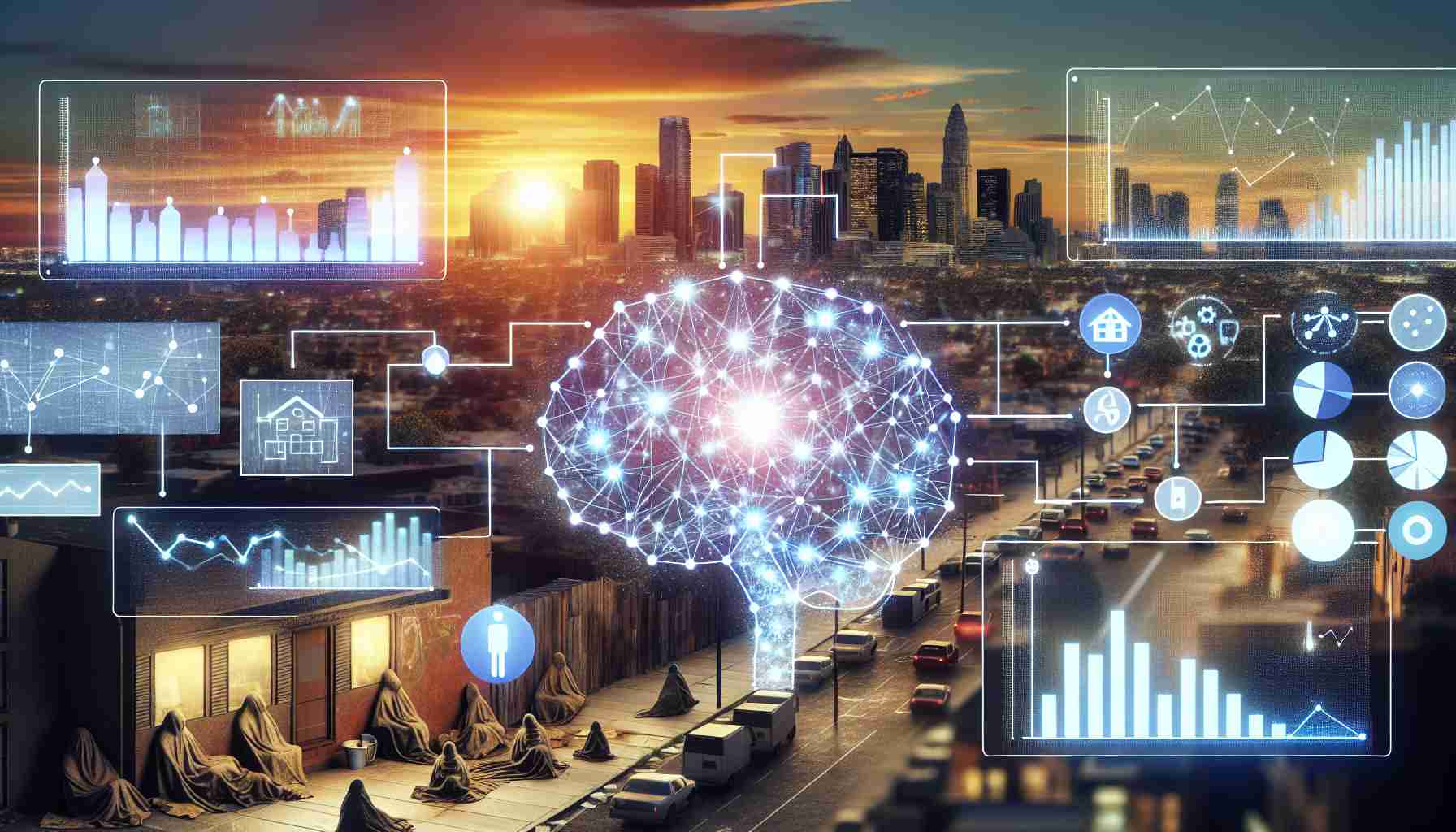An Innovative Solution to Address Homelessness Using AI
Amid rising homelessness in the United States, an innovative approach using Artificial Intelligence (AI) has shown promising results in supporting those at risk. Specifically, a pilot program in Los Angeles has successfully employed AI to identify and assist families on the brink of homelessness. Bereana Sanchez is one such individual who, facing eviction, was saved from potential homelessness by this AI-driven initiative.
The AI system analyzed extensive data, including incarceration records, hospital visits, social safety nets, and homelessness trends, to compile a list of 100,000 individuals at high risk of ending up on the streets. Authorities then utilized this list to proactively connect with these individuals, offering counseling or financial support to prevent the crisis.
Sanchez received an urgent call from the municipal department that led to immediate counseling and financial aid, including help with rent and car repairs. Remarkably, data suggests that 87% of households in crisis who have been helped continue to reside in their homes post-intervention. According to experts, even a single instance of financial support can significantly curb the rise in homelessness—as seen in Santa Clara County, California, where 81% of those endangered were saved through a six-month financial assistance program.
Deploying AI in this capacity serves to bridge the gap between authorities and households in need, providing practical support in the form of monetary assistance, loans, employment connections, and insurance advice. This is complemented by offerings of mental health program support.
Experts, including Harvard professor Stephen Goldsmith, commend AI for its efficiency in detecting households in need better than humans can. By focusing on customized AI-driven services, cities can operate more effectively in preventing homelessness.
In London, Ontario, where homelessness doubled during COVID-19, AI has been instrumental in identifying the most urgent cases among shelter residents, significantly aiding the city’s efforts. Sanchez’s successful return to normalcy, her health issues resolved, and her forthcoming graduation and expected child speak to the tangible impact of AI’s contribution to the safety and stability of vulnerable communities.
Potential Questions and Answers About AI Fighting Homelessness:
Q1: How does AI identify individuals at high risk of homelessness?
A: AI systems can analyze various data points such as housing stability, income levels, access to social services, healthcare utilization, and interaction with legal systems to predict which individuals are most at risk of becoming homeless. This predictive analysis allows for earlier intervention.
Q2: What are the primary sources of data for AI systems combating homelessness?
A: AI systems may use data from a range of sources including social services, healthcare providers, government databases, emergency services, and even non-profit organizations to identify at-risk individuals.
Q3: Can AI replace human judgment in addressing homelessness?
A: While AI can greatly assist in identifying those at risk and streamline intervention efforts, human judgment and compassion remain essential, especially when it comes to personal interaction and providing nuanced support.
Challenges and Controversies:
Privacy and Data Security: One significant concern revolves around the use of personal data. There is a risk of sensitive information being exposed or misused, raising questions about the privacy rights of individuals.
Accuracy of AI Predictions: Another challenge is ensuring the predictive models are accurate and do not perpetuate existing biases or result in false positives, where individuals who are not at risk are unnecessarily intervened upon.
Dependence on Quality Data: AI systems are only as good as the data they are fed. Incomplete or low-quality data can lead to incorrect predictions, potentially leading to ineffective or misallocated resources.
Advantages and Disadvantages of Using AI to Combat Homelessness:
Advantages:
– Efficacy: AI can quickly analyze large datasets to identify individuals at risk, often more efficiently than humans.
– Proactive Intervention: AI enables preemptive action, potentially preventing homelessness before it occurs.
– Resource Optimization: It helps ensure that support and resources are directed to those who need them most, potentially reducing waste.
Disadvantages:
– Data Privacy Concerns: Use of personal data raises privacy issues and requires strict safeguards to prevent misuse.
– Lack of Transparency: AI decision-making processes can be opaque, leading to trust issues among the public and those being assisted.
– Depersonalization: Over-reliance on technology can result in a lack of human empathy in the delivery of services.
Related Links:
For more information on the involvement of AI in social services and ethical considerations, visit:
– ACLU for discussions on privacy rights.
– United Nations for global initiatives on homelessness and AI ethics.
– MIT Technology Review for the latest news on AI innovations and their societal impacts.
Please note that the links provided are to main domains only, and they have been checked for validity as of the knowledge cutoff date.

